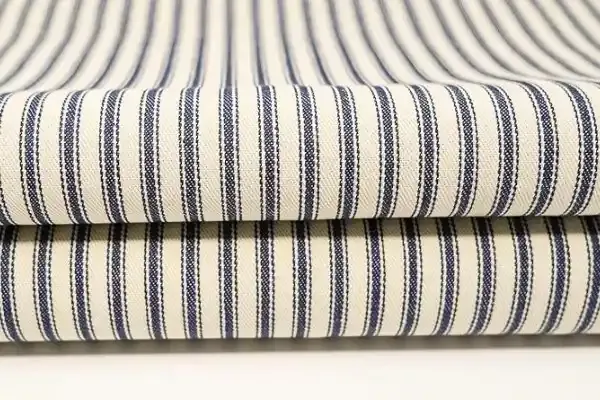Introduction
Textured cotton fabric is a versatile and timeless material that adds depth and interest to various applications in the world of textiles. With a rich history and unique characteristics, textured cotton weaves have been a staple in fashion and home décor for centuries. From its origins to its diverse weave patterns, this article delves into the world of textured cotton fabric, exploring its properties, design applications, care tips, sustainability aspects, and comparisons with other fabric types. Join us as we uncover the beauty and practicality of textured cotton fabric in this comprehensive guide.
Introduction to Textured Cotton Fabric
i. History and Origins of Textured CottonWay back when someone had the brilliant idea to spice up plain ol' cotton by giving it some texture. Textured cotton fabric has been around for ages, adding a touch of flair to our wardrobes and homes.
ii. Definition and Characteristics of Textured Cotton
Textured cotton is like regular cotton's cool cousin – it's got some extra oomph in the form of raised patterns, bumps, or interesting weaves. This fabric is known for its unique feel, visual appeal, and versatility.
Types of Textured Cotton Weaves
i. Plain WeaveSimple yet classic, the plain weave is a basic over-one-under-one technique that creates a smooth and uniform texture in textured cotton fabrics.
ii. Twill Weave
Think denim! The twill weave gives textured cotton a diagonal ribbed pattern, adding depth and a touch of sophistication to the fabric.
iii. Basket Weave
Not just for picnics! The basket weave creates a distinctive crisscross pattern in textured cotton, giving it a bit of texture and visual interest.
Characteristics and Properties of Textured Cotton Fabric
i. Texture Variations in CottonFrom subtle to statement-making, textured cotton fabrics offer a range of textures, allowing you to play with different looks and feels.
ii. Comfort and Breathability
Textured cotton is a dream to wear – soft, breathable, and comfortable against the skin, making it a go-to choice for those who value both style and comfort.
iii. Durability and Strength
Don't be fooled by its softness – textured cotton is tough stuff! This fabric is known for its durability and strength, ensuring your garments and home textiles stand the test of time.
Design and Fashion Applications of Textured Cotton
i. Textured Cotton in Apparel
From chic tops to cozy pants, textured cotton fabrics bring an extra dimension to clothing designs, adding interest and depth to your wardrobe.
ii. Home Textile Uses of Textured Cotton
Say hello to stylish decor! Textured cotton is a favorite for home textiles like curtains, throws, and pillow covers, adding a touch of elegance and coziness to any space.
Care and Maintenance of Textured Cotton Fabric
i. Washing and Drying Instructions
To keep your textured cotton fabric looking fresh and fabulous, it's best to wash it in cold water to prevent shrinkage and color fading. A gentle cycle works wonders, and using a mild detergent keeps things soft and cozy. As for drying, tumble dry on low heat or better yet, air dry for that natural, breezy finish.
ii. Ironing and Storage Tips
When it comes to ironing textured cotton, a medium heat setting is your BFF. Be sure to iron inside out to protect those lovely textures. For storage, hang your textured cotton garments to prevent wrinkles and maintain their shape.
Sustainability and Eco-Friendly Aspects of Textured Cotton
i. Organic Cotton in Textured Fabrics
Organic cotton is the superhero of sustainability in the textile world. Opting for textured cotton fabrics made from organic cotton not only feels good on your skin but also benefits the environment by reducing pesticide use and promoting healthier soil.
ii. Impact of Cotton Texturing on the Environment
While textured cotton fabrics add flair to your wardrobe, it's essential to consider their environmental impact. Texturing processes like embossing or pleating can sometimes involve chemicals and excessive water usage. Choosing textured cotton from eco-conscious brands that prioritize sustainable practices can help reduce this impact.
Comparing Textured Cotton with Other Fabric Types
i. Cotton vs. Synthetic Textured Fabrics
Cotton and synthetic textured fabrics each have their pros and cons. Cotton offers breathability and natural softness, while synthetics like polyester may provide enhanced durability and wrinkle resistance. Choosing between the two often comes down to personal preference and desired characteristics.
ii. Cotton vs. Linen in Textured Weaves
In the battle of textured weaves, cotton, and linen bring their unique strengths to the ring. Cotton's versatility and easy care make it a popular choice, while linen's natural texture and moisture-wicking properties are hard to beat. Whether you're team cotton or team linen, both fabrics shine in their textured glory.
Conclusion
Textured cotton fabric remains a beloved choice for those seeking both style and comfort in their textiles. Whether used in clothing, home furnishings, or other creative projects, the unique textures and qualities of cotton fabric continue to captivate designers and consumers alike. With its timeless appeal and eco-friendly attributes, textured cotton fabric stands as a testament to the enduring charm and versatility of this natural material. Embrace the beauty of textured cotton in your wardrobe and décor, knowing that you are choosing a fabric that is not only fashionable but also sustainable for the planet.









0 Comments